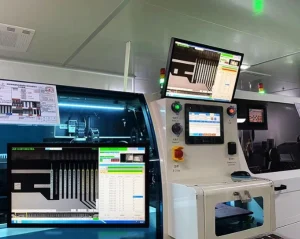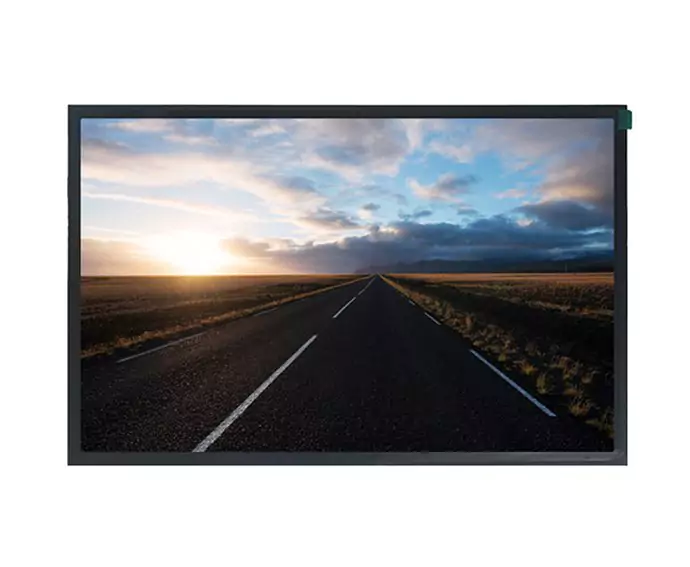What Are IPS and LED Technologies?
When deciding on a monitor to purchase, it often comes down to comparing IPS and LED technologies, each with its features tailored to preferences and requirements.
Exploring IPS Technology
IPS (In-plane Switching) technology is well known for its capability to provide color accuracy and broad viewing angles which makes it perfect for activities, like design and photo editing that demand precise color rendering accuracy. Devices with IPS monitors offer an image quality experience, with color distortion even when viewed from varying angles.
Understanding LED Technology
LED technology is used for backlighting in LCD screens. Is popular, for its energy efficiency and sleek designs. The monitors using LED technology are praised for their brightness levels which make them suitable for lighting environments. Although they might not achieve the color accuracy as IPS panels LED monitors offer displays that are ideal for everyday use.
How Do IPS and LED Monitors Differ in Display Quality?
When deciding between IPS and LED monitors it’s important to take display quality into account.
Color Accuracy and Consistency
IPS monitors are known for their ability to display colors accurately and consistently from viewing angles. A feature valued by professionals who require color accuracy in their projects. On the other hand LED monitors may show some differences, in color when viewed from angles which might be a worry, for tasks that require exact color matching.
Viewing Angles and Clarity
The angle from which you view a monitor can have an impact on your viewing experience. IPS technology ensures that you can see the screen clearly and accurately from angles without any loss in image quality or color accuracy. This feature is particularly beneficial, in settings where multiple individuals need to view the screen at the time. On the other hand, LED monitors may provide clarity but their performance tends to suffer when viewed from extreme angles.
Which Technology Offers Better Performance for Your Tasks?
When deciding between IPS and LED it all comes down to your situation. How do you plan to use them in different scenarios?
Gaming and Multimedia Use Cases
For people who love gaming and care about their gaming experience, it’s important to consider response time and refresh rates when choosing a monitor. In the past IPS panels were known for having response times compared to types of panels but with recent improvements in technology, this difference has been greatly reduced. However, for those who value speed above all else, some gamers may still opt for specific LED monitors that provide faster response times.
Professional Design and Editing Needs
When working on design tasks or editing photos, in detail an IPS monitor is probably the option since it offers superior color precision and consistency. While working in these fields the capability to see colors that are true to life is extremely valuable making IPS technology the top choice, for experts.
Uncover the latest in cutting-edge display options with Kadi Display, where a variety of state-of-the-art screens are available to cater to the demands of professionals and everyday users alike guaranteeing top-notch performance customized to your needs.
To sum up, both IPS and LED technologies come with their set of advantages and disadvantages to consider carefully before making a decision that aligns with your requirements—be it the need, for accurate color representation or energy-saving features—keeping in mind your usage patterns for the monitor on a day, to day basis.
How Does Energy Efficiency Compare Between IPS and LED?
When thinking about the energy efficiency of a monitor it’s important to assess how IPS and LED technologies fare when it comes to power usage and their impact, on the environment.
Power Consumption Analysis
LED screens are popular, for their energy efficiency thanks to the use of LED backlight technology which reduces power consumption compared to types of monitors. This feature could be appealing to those who are mindful of their energy usage habits and wish to lower their electricity bills in the run. In contrast to this are IPS monitors which excel in display quality but tend to consume a bit of energy due to the need to maintain colors and wide viewing angles using advanced technology. Nevertheless, recent developments, in IPS technology have resulted in energy models that bridge this gap and offer improved power efficiency.
Environmental Impact Considerations
Choosing a monitor that consumes power can be beneficial, for the environment as it helps reduce your carbon footprint in a way. LED monitors are preferred in this aspect due to their electricity usage which leads to an impact on the environment. Additionally, manufacturers are increasingly creating eco LED screens using materials and reducing harmful substances. Although IPS monitors also have eco features their higher energy consumption may be something to think about if sustainability is important to you.
What Should You Consider When Choosing Between IPS and LED?
When deciding between IPS and LED monitors you need to consider more, than the display quality and energy efficiency.
Budget Constraints and Value for Money
When choosing a monitor technology that fits your needs best your budget is key in the decision-making process! LED monitors usually come with a higher price tag than IPS monitors which makes them a practical option, for everyday tasks or general multimedia use However if you need accurate color representation or wide viewing angles an IPS monitor could be worth the investment even though it may cost more upfront.
Brand Reliability and Product Support
When deciding between IPS and LED monitors take into account the brand’s track record, for dependability and customer service quality. Having a brand typically means you’ll get top-notch products with support services. It’s recommended to opt for brands that provide warranties and attentive customer care to handle any problems that might come up while using your monitor.
Making an Informed Decision Based on Your Needs
When choosing between IPS and LED technologies, your needs and preferences are factors to consider in making a decision.
Assessing Personal Preferences and Requirements
When deciding on the option, for your needs in situations – whether it’s about getting the colors right or having a screen that saves energy and money – there are key factors to consider. If you work in design or photography and require color representation for your work accuracy is important to you; an IPS monitor would probably be the choice. On the other hand, if you’re after a budget option that offers good performance, for daily activities or gaming where speed is essential an LED monitor could be a suitable alternative.
Final Thoughts on Selecting the Right Monitor Technology
In the end, it all comes down to whether IPS or LED suits your daily monitor usage best. Consider the advantages and disadvantages of each technology based on your requirements and tastes. This way you can be sure that your investment brings happiness and lives up to your standards in the run.
If you’re looking for display options that cater to purposes—be it for work setups or home leisure, check out Kadi Displays‘ lineup of state-of-the-art monitors that feature the latest technology innovations. Rest assured their dedication to providing top-notch products guarantees you’ll discover a display solution that suits your needs perfectly.
Ultimately, your choice between these two popular monitor technologies will be influenced by whether you value colors or energy efficiency in the decision-making process.














